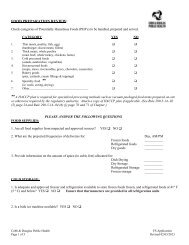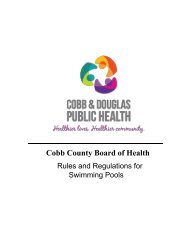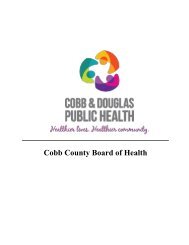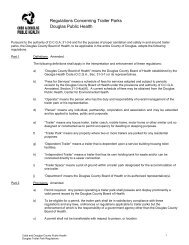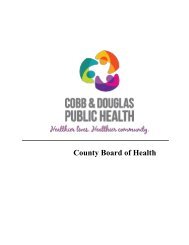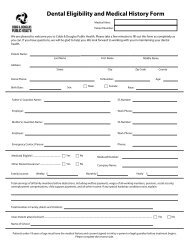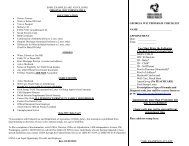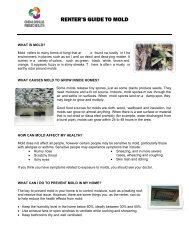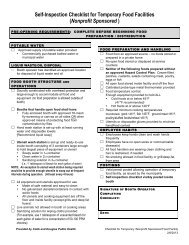RULES OF - Cobb & Douglas Public Health
RULES OF - Cobb & Douglas Public Health
RULES OF - Cobb & Douglas Public Health
Create successful ePaper yourself
Turn your PDF publications into a flip-book with our unique Google optimized e-Paper software.
Chapter 290-5-14<br />
Food Service<br />
290-5-14-.07 Physical Facilities. (5) Maintenance and Operation. (o) Prohibiting Animals. 2.<br />
(cont.)<br />
2. Live animals may be allowed in the following situations if the contamination of food; clean<br />
equipment, utensils, and linens; and unwrapped single-service and single-use articles cannot result:<br />
(i) Edible fish or decorative fish in aquariums, shellfish or crustacea on ice or<br />
under refrigeration, and shellfish and crustacea in display tank systems;<br />
(ii) Patrol dogs accompanying police or security officers in offices and dining, sales,<br />
and storage areas, and sentry dogs running loose in outside fenced areas;<br />
(iii) In areas that are not used for food preparation and that are usually open for<br />
customers ,such as dining and sales areas, service animals that are controlled by the<br />
disabled employee, person or trainer of such animal, if a health or safety hazard will not result<br />
from the presence or activities of the service animal;<br />
(iv) Pets in the common dining areas of group residences or institutional care facilities at<br />
times other than during meals if:<br />
(I) Effective partitioning and self-closing doors separate the common dining areas from<br />
food storage or food preparation areas; and<br />
(II) Condiments, equipment, and utensils are stored in enclosed cabinets or removed<br />
from the common dining areas when pets are present; and<br />
(III) Dining areas including tables, countertops, and similar surfaces are<br />
effectively cleaned before the next meal service; and<br />
(v) In areas that are not used for food preparation, storage, sales, display, or dining, in<br />
which there are caged animals or animals that are similarly restricted, such as in a variety store<br />
that sells pets or a tourist park that displays animals.<br />
3. Live or dead fish bait may be stored if contamination of food; clean equipment, utensils, and<br />
linens; and unwrapped single-service and single-use articles can not result.<br />
(6) Poisonous or Toxic Materials.<br />
(a) Original Containers, Identifying Information. Containers of poisonous or toxic materials<br />
shall bear a legible manufacturer's label.<br />
(b) Working Containers, Common Name. Working containers used for storing poisonous or<br />
toxic materials such as cleaners and sanitizers taken from bulk supplies shall be clearly and<br />
individually identified with the common name of the material.<br />
(c) Storage, Separation. Poisonous or toxic materials shall be stored so they can not contaminate<br />
food, equipment, utensils, linens, and single-service and single-use articles by:<br />
<strong>Cobb</strong> and <strong>Douglas</strong> County <strong>Public</strong> <strong>Health</strong><br />
<strong>Douglas</strong> Food Service Code<br />
126




